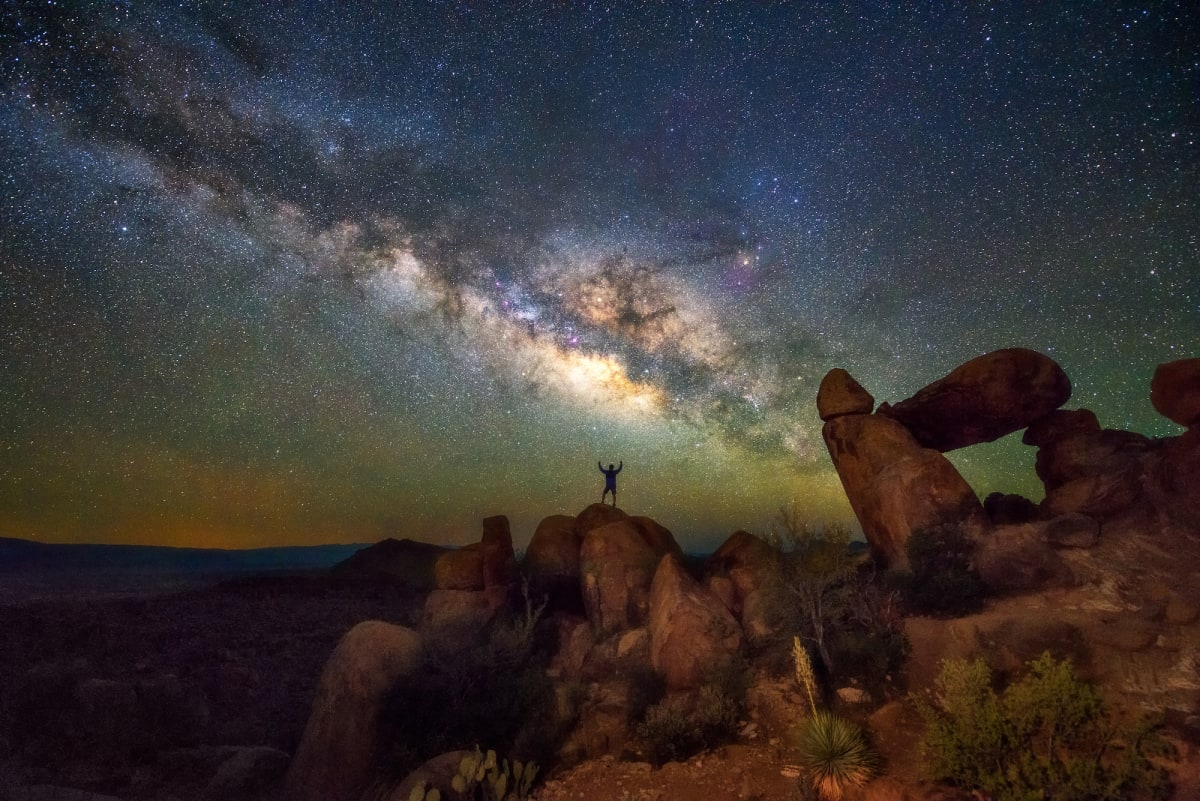
Remember stars?
No, not movie stars. If you live in the city, you may have forgotten the sight of a star-filled sky, but perhaps remember it from a long-ago camping trip you went on as a child.
But today, millions of children around the world will never experience the sight of the Milky Way in the skies where they live, according to the International Dark-Sky Association.
Less than 100 years ago, everyone could look up and see a spectacular starry night sky. There’s nothing wrong with the stars, of course, it’s just us -- electricity came along, and in urban and suburban areas, artificial lighting and atmospheric pollutants wash out the light of the stars.
In most places where people live, light pollution makes it almost impossible to see more than a few stars in the sky, even on a clear night. And that light pollution is far reaching, even in some parks , the night sky is washed out by the lights from distant cities.
Constellations and stars have inspired stories and insights across countless cultures over many centuries, says the International Dark-Sky Association, an authority on light pollution and the leading organization combating it worldwide.
Plants and animals depend on Earth’s daily cycle of light and dark rhythm to govern life-sustaining behaviors such as reproduction, nourishment, sleep and protection from predators, the IDA says. Scientific evidence suggests that artificial light at night has negative and deadly effects on many of earth’s creatures.
For example, artificial light can cause migrating birds to wander off course and toward the dangerous nighttime landscapes of cities. Sea turtles hatch from their eggs on the beach at night, and take a brief but perilous journey to the ocean, but artificial lights can send them in the wrong direction. In Florida alone, millions of hatchlings die this way every year, according to the IDA.
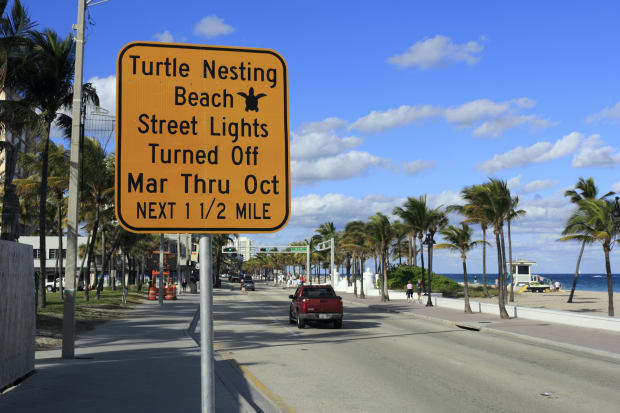
So where can you go to see the dark dome of sky peppered with millions of stars, along with meteors, planets and comets? Many national parks are great spots for stargazing, and for the National Park Service, light pollution is a mounting concern. The NPS considers the night sky a natural resource as well as a cultural and economic one. Preserving dark sky viewsheds benefits park visitors, wildlife and habitat.
While many of the most popular national parks are great for stargazing, they can get pretty crowded, but there are a number of remote, dark spots off the beaten path where you can set up your telescope or camera or just gaze at millions of stars. Here are 12 state and national parks where you can see stellar night skies, plus some ways to help mitigate light pollution.
12 Dark Parks for Stargazing
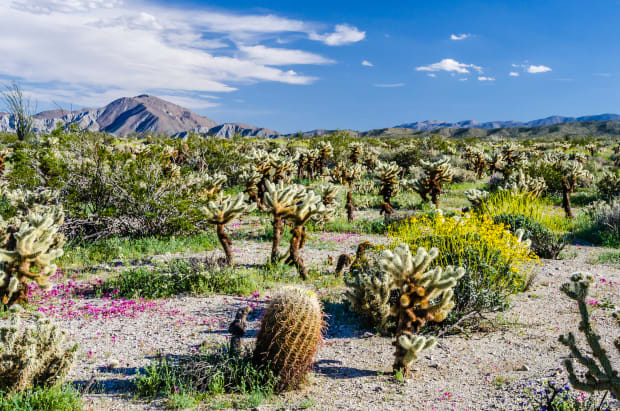
Anza Borrego Desert State Park, Calif.
At 915 square miles, this state park in southern California is the country’s second largest state park by land area, after New York’s Adirondack State Park. A two-hour drive from San Diego, the park is part of the Mojave and Colorado Deserts Unesco Biosphere Reserve.
The park provides habitat for a rich biodiversity including the state’s only native palm species, and a number of endangered species including desert bighorn sheep.
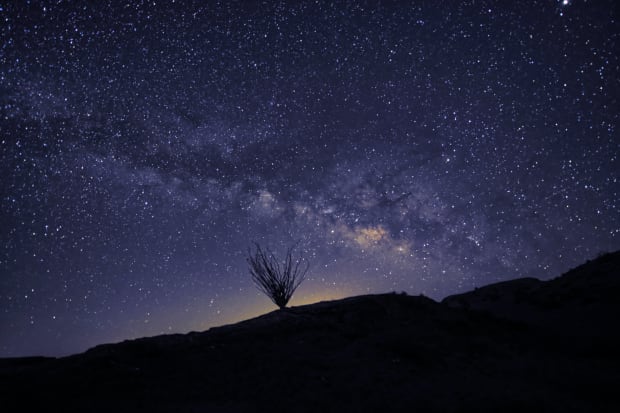
Anza Borrego Desert State Park
Because of the rugged terrain and challenging climate, this region of California remains largely undeveloped, which keeps the area’s night skies relatively dark.
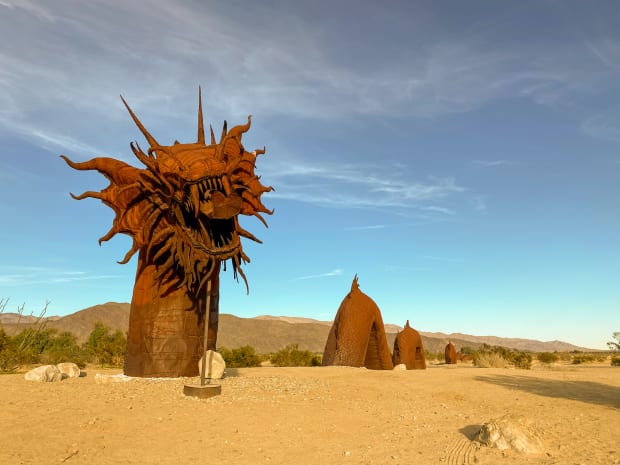
Anza Borrego Desert State Park
Anza Borrego features 130 stunning large metal sculptures featuring everything from realistic desert creatures like scorpions, wild horses and bighorn sheep to prehistoric dinosaurs and this 350-foot long serpent.
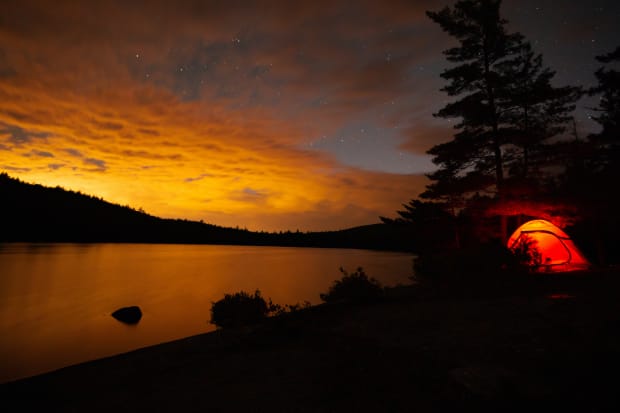
AMC Maine Woods International Dark Sky Park
The Appalachian Mountain Club Maine Woods International Dark Sky Park lies at the edge of the North Maine Woods, an expanse of largely uninhabited forest stretching from Monson, Maine, to the Canadian border. This area is one of the darkest places left on the East Coast.
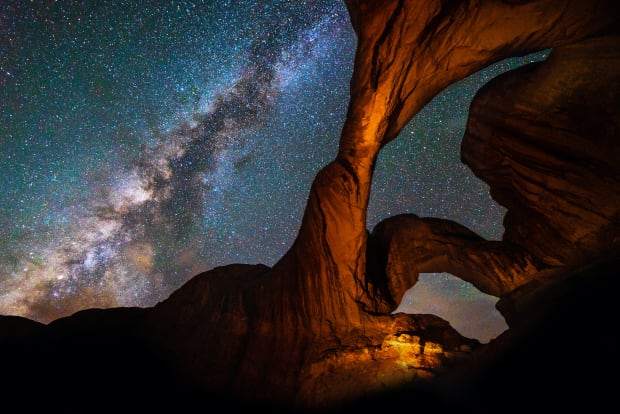
Arches National Park, Utah
Arches is one of five stunning national parks in Utah, but is farther to the east and 5.5 hours' drive from the busier Zion National Park. As its name suggests, Arches features more than 2,000 natural sandstone arches. Because it's far from the big cities, the dark skies make it perfect for stargazing.
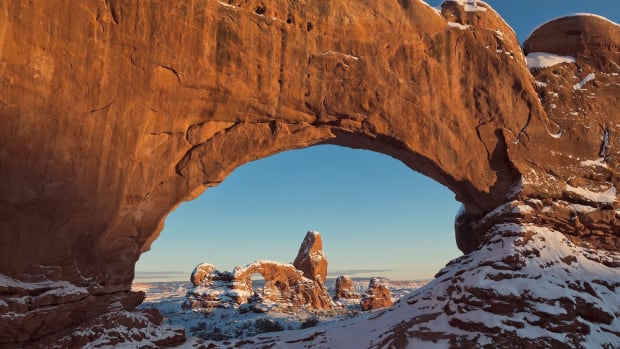
Arches National Park
This varied landscape of geological formations offers great hiking trails and stunning sunsets. Winter is the quietest time to visit Arches. Although the park is not one of the nation's most busy, it still draws enough people that the park service requires timed reservations from April through October, and there are webcams showing traffic conditions in the park.
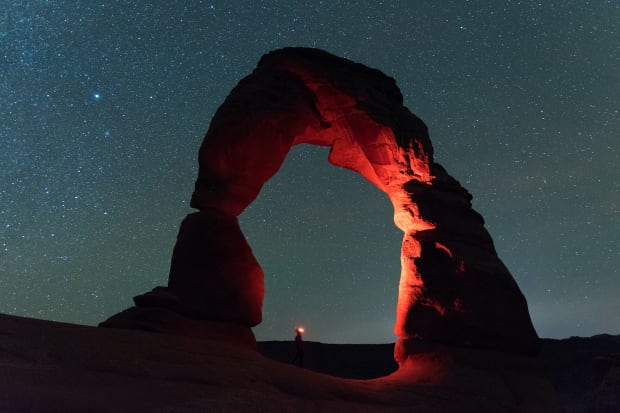
Arches National Park
Arches preserves the spectacular night sky thanks to low light pollution and excellent air quality.
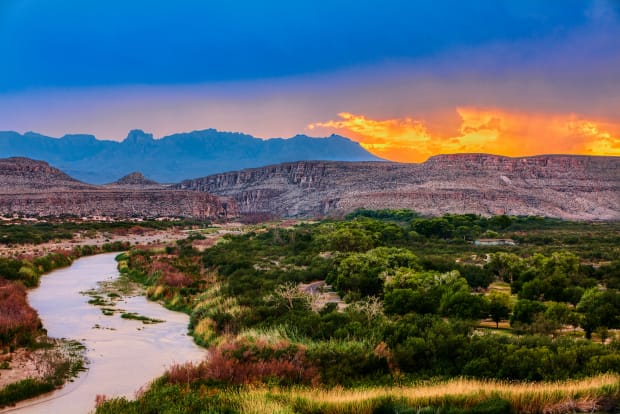
Big Bend National Park, Texas
Big Bend National Park is named for its location on the big bend of the Rio Grande that forms the border between Texas and Mexico. It’s the largest protected area of Chihuahuan Desert topography and ecology in the U.S.
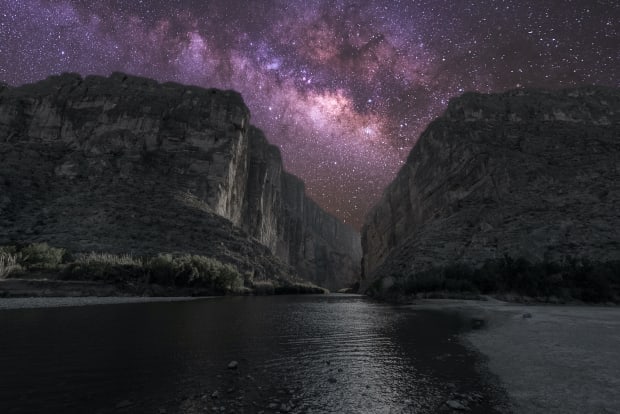
Big Bend National Park
One of the largest, most remote, and least-visited national parks in the lower 48 states, Big Bend's great distance from the light pollution of major urban centers renders the skies dark as coal and among the darkest in North America, making stargazing optimal.

Big Bend National Park
When you head to Big Bend or any park for stargazing, check air pollution figures, and plan your trip during the new moon for darkest conditions.
Big Bend National Park is seeing a big increase in visitation and more demand for camping. The busy season is October through April.
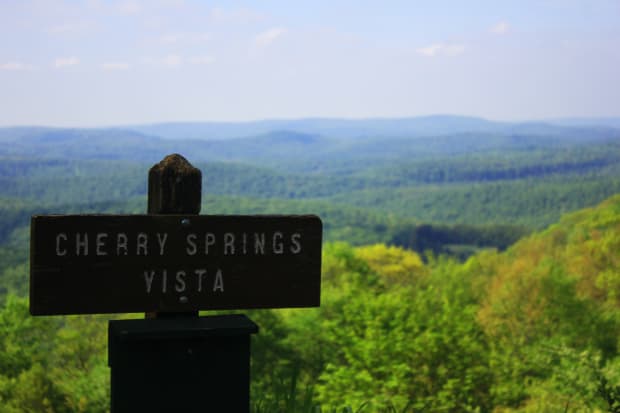
Cherry Springs State Park, Pa.
Dark skies are fewer and farther between in the Eastern U.S., but Cherry Springs is one of the best spots for them. The 82-acre park is located in the Susquehannock State Forest in north-central Pennsylvania, and named for its large stands of cherry trees.
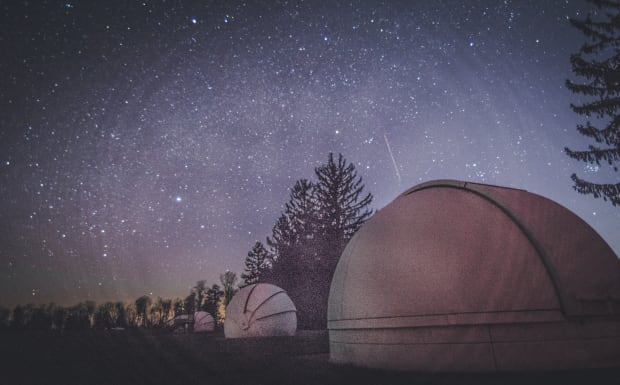
Cherry Springs State Park
The overnight astronomy observation field for serious astronomers at Cherry Springs offers an excellent 360-degree view of the night sky. Lighting in the park is shielded and all white light has been converted to red to reduce light pollution. There's also a Night sky public viewing area for stargazers who just want to spend a few hours viewing the sky.
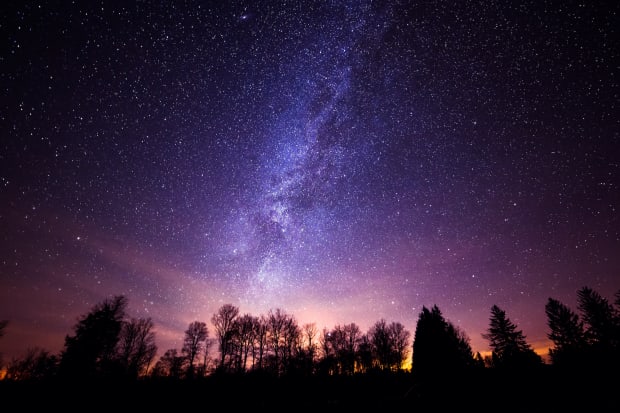
Cherry Springs State Park
The park is nearly as remote and wild today as it was two centuries ago. The Susquehannock Trail passes nearby and offers 85 miles of backpacking and hiking.
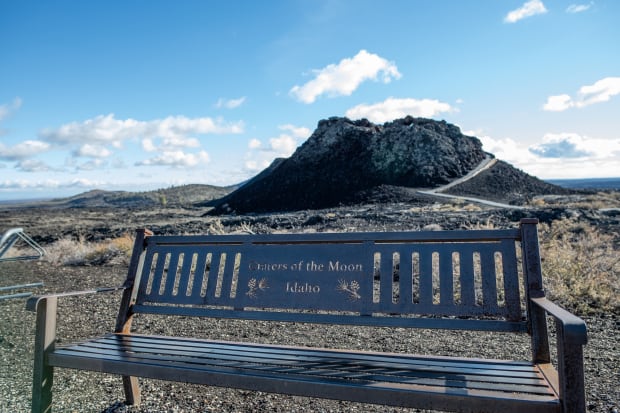
Craters of the Moon National Monument, Idaho
This eerie, desolate landscape protects over 53,000 acres of volcanic formations and lava flows on the northern edge of the Snake River Plain in south-central Idaho.
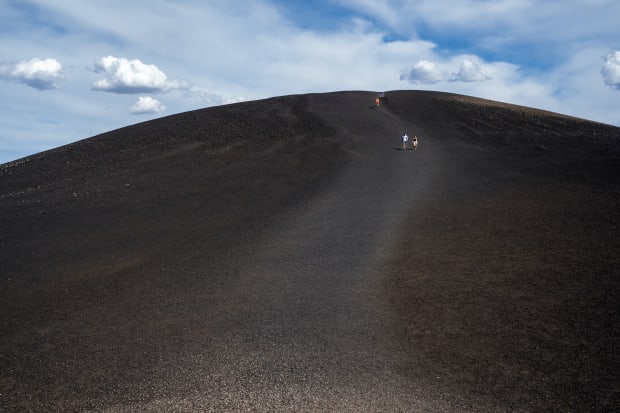
Craters of the Moon National Monument
Craters of the Moon is a vast ocean of lava flows with scattered islands of cinder cones and sagebrush. A sequence of eruptions in the area from roughly 15,000 to 2,000 years ago resulted from rifting of the surface due to residual heat from the Yellowstone hotspot, which is thought to have been located under what is now Craters of the Moon some 10 to 11 million years ago.
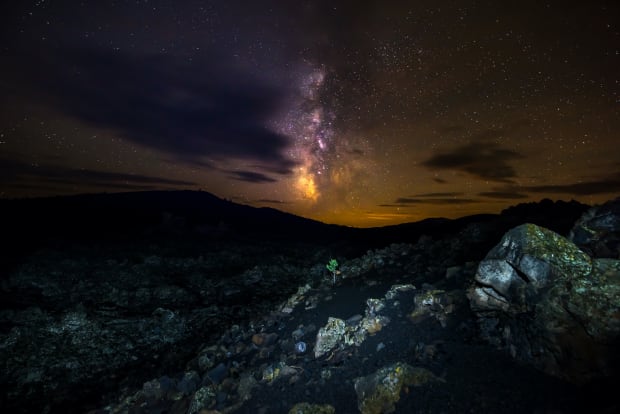
Craters of the Moon National Monument
Craters of the Moon has caves and trails, scenic drives and educational exhibits. The Tree Molds Trail features molds of ancient trees encased in lava. In winter there is cross-country skiing.
The monument sits at the edge of one of the largest remaining ‘pools’ of natural nighttime darkness in the lower 48 U.S. states, defined by the rugged wilderness of interior Idaho.
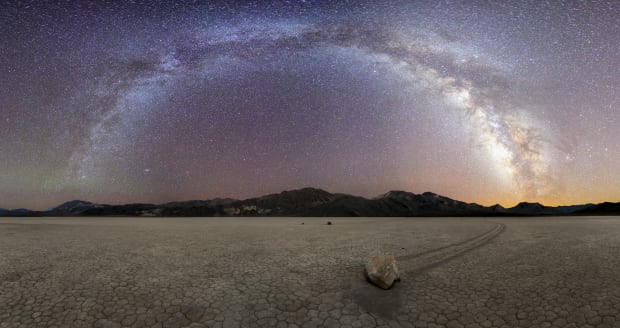
Death Valley National Park, California-Nevada
It's a place of extremes: Death Valley is one of the hottest and driest places on earth, it's also one of the darkest. The skies there are affected by only the smallest amounts of light pollution, giving it Gold Tier classification by the International Dark-Sky Association. Astronomical objects seen in Death Valley are available only to some of the darkest locations across in the world.
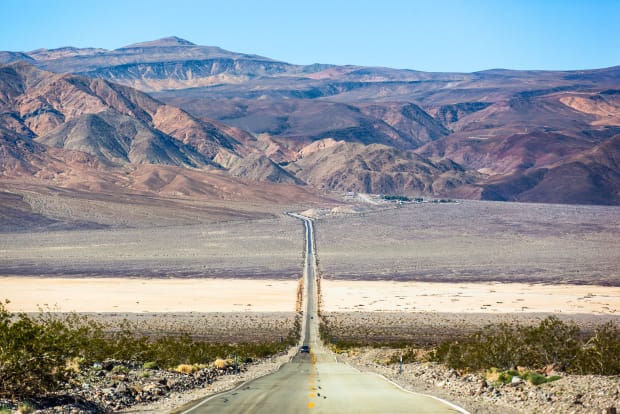
Death Valley National Park
Death Valley is also the largest U.S. National Park outside Alaska at 3.4 million acres. Located in remote southeast California on the Nevada border, Death Valley is a rugged, unforgiving desert teeming with a surprising amount of life, but can be scorching hot by May, and summer temperatures can top 120 F. The park has unusual features, including the famous sailing stones, vast salt flats, canyons and sand dunes.
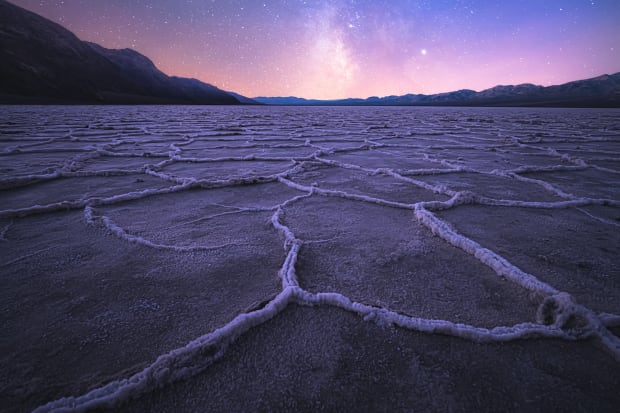
Death Valley National Park
Spring is a popular time to visit Death Valley. Rains can cause deadly flash floods, but a rainy year can also produce a rare superbloom of desert flowers.
The night skies above the park are as fragile as the land below. The park is mostly free of its own sources of light pollution but the encroaching lights of distant Las Vegas and other cities threaten the park’s skies and desert nightlife.
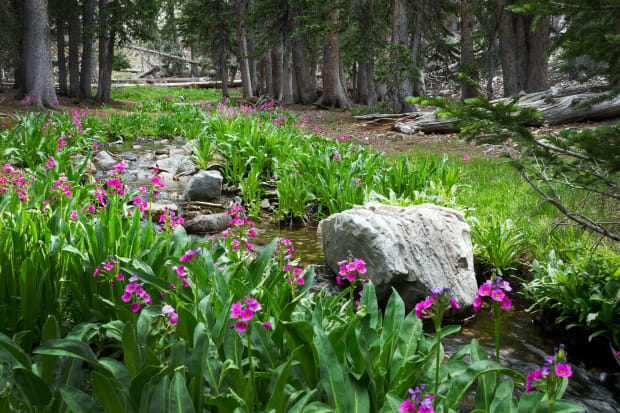
Great Basin National Park, Nev.
This park in Eastern Nevada is located in one of the least-populated regions of the lower 48 states. In fact, it’s just off the stretch of US route 50 that was dubbed the "The Loneliest Road in America" by Life magazine in July 1986. The park is about 290 miles from the lights of Las Vegas.
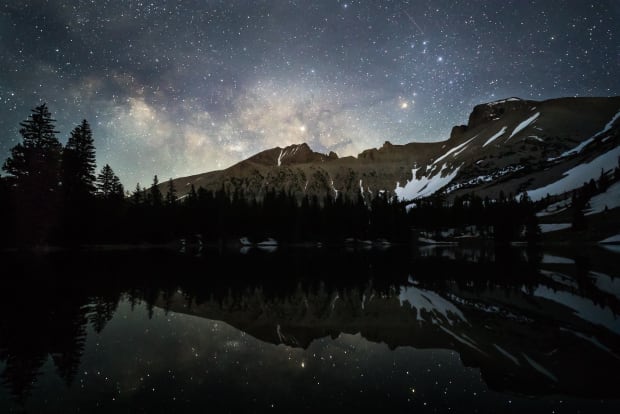
Great Basin National Park
The Great Basin is a dry and mountainous region between Californa’s Sierra Nevada and the Wasatch Mountains of Utah. The topography of the area helps shield the site from skyglow from distant cities. The result is a truly notable dark-sky resource.
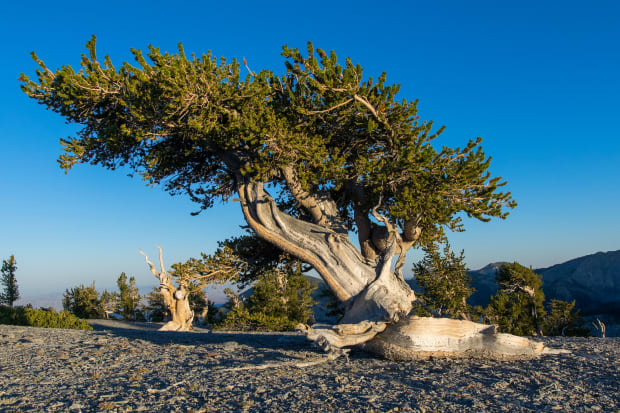
Great Basin National Park
Great Basin National Park protects a number of bristlecone pines, the world's longest-living tree. These trees have been known to live for over 4,900 years. The oldest known living bristlecone, at least 4,600 years old, is in the White Mountains near Bishop, California.
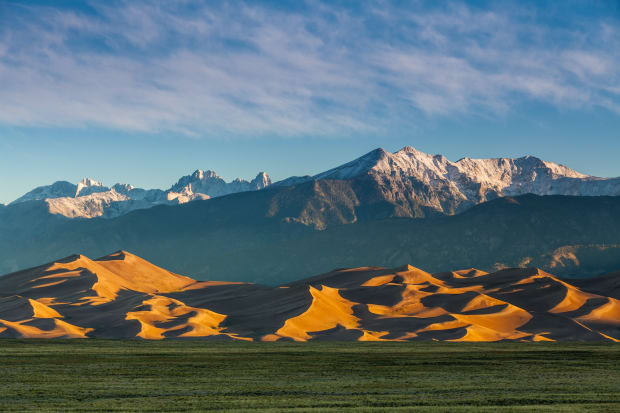
Great Sand Dunes National Park and Preserve, Colo.
This 232-square mile park in south-central Colorado contains the tallest sand dunes in North America.
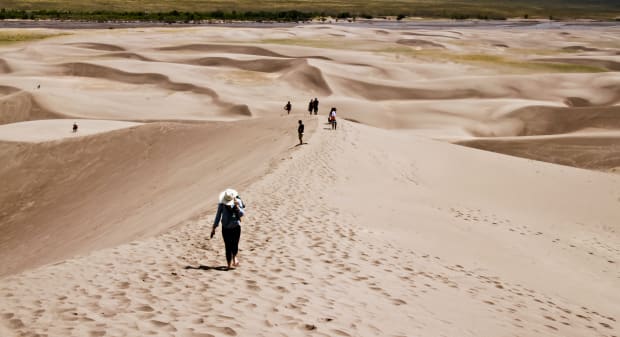
Great Sand Dunes National Park and Preserve
The dunes formed over millions of years when creeks and streams brought in large amounts of sediment and sand into the valley. Wind then blew the sand toward the bend in the Sangre de Cristo Mountains, where opposing storm winds helped squeeze the sand into these tall dunes.
A seasonal creek sometimes runs at the base of the dunes, creating a fun, sandy beach.
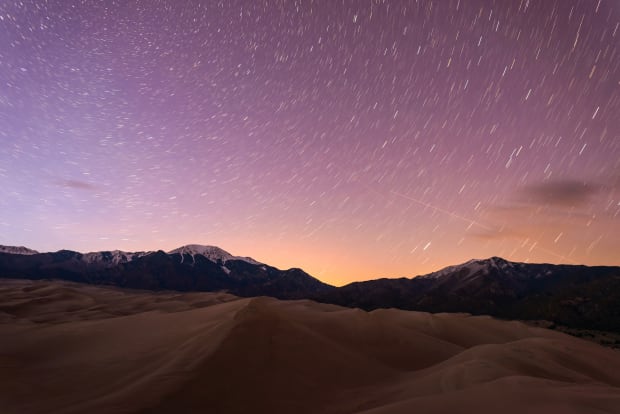
Great Sand Dunes National Park and Preserve
The National Park Service says that Great Sand Dunes is one of the quietest NPS sites and enjoys extremely pristine night skies owing to its remote location.
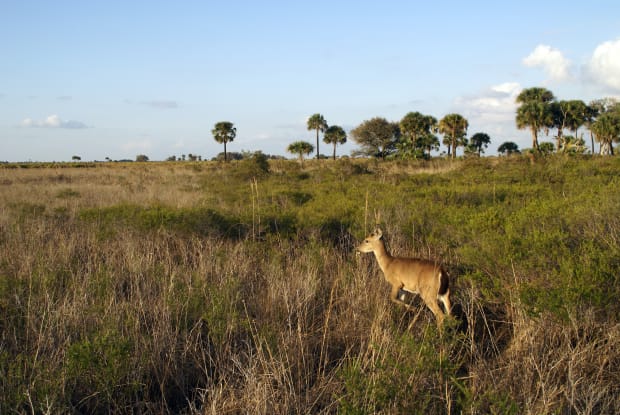
Kissimmee Prairie Preserve State Park, Fla.
Located in central Florida, this preserve protects what remains of the Florida dry prairie ecosystem, which is home to 48 listed native species. The park has over 110 miles of trails and fire-breaks accessible only by hikers, bikers, and horseback riders. Hunting is outlawed.
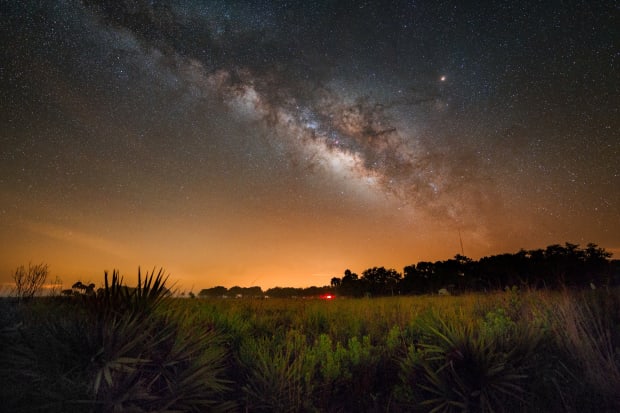
Kissimmee Prairie Preserve State Park
Kissimmee Prairie Preserve is a rare natural area that remains under preservation in its part of the state. It's located away from population centers, and according to the International Dark-Sky Association, the park's leadership and staff have taken laudable steps toward securing the integrity of dark nights and educating visitors about the importance of natural dark for maintaining the prairie’s delicate ecosystem.
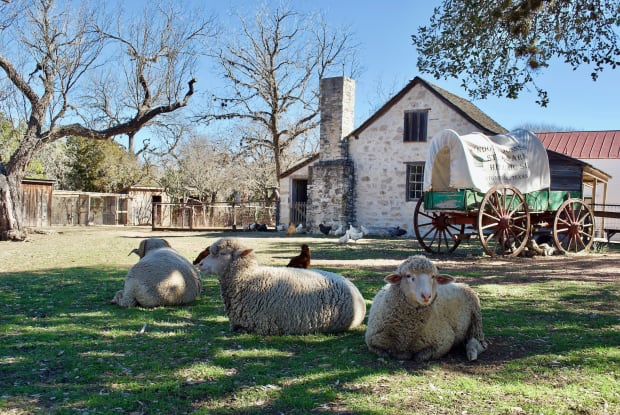
Lyndon B. Johnson National Historical Park, Texas
The ranch 60 miles northwest of San Antonio, Texas belonged to the 36th president. The park includes his boyhood home and the log cabin where his grandparents lived, dating back to the 1860s.
There's an exhibit center focusing on the family cattle business, early Johnson family and settlement history, and Hill Country survival.
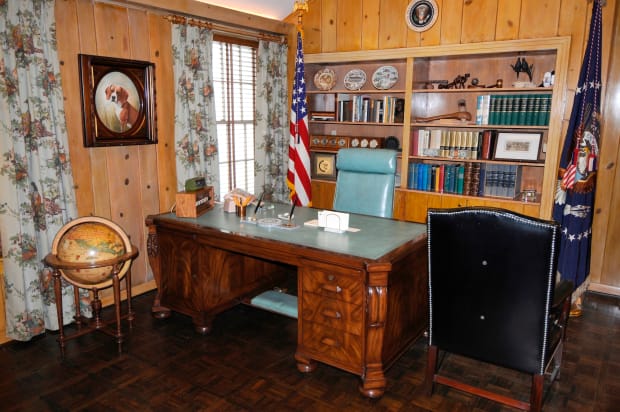
Lyndon B. Johnson National Historical Park
Visitors can take a self-paced driving tour of the LBJ Ranch and enjoy exhibits throughout what is known as the Texas White House complex, where Johnson spent about a quarter of his presidency.
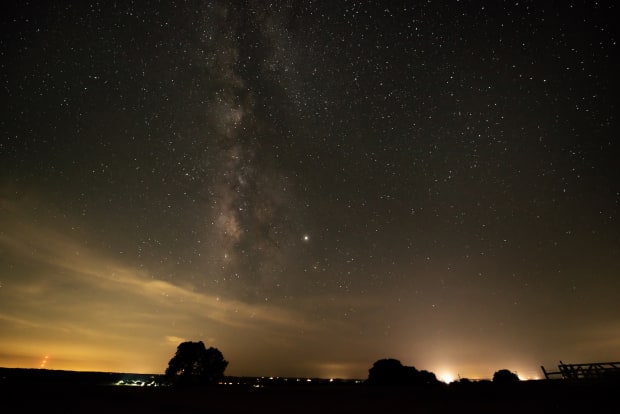
Lyndon B. Johnson National Historical Park
"The moons are a little fuller here; the stars a little brighter," Johnson said of the ranch. It's little wonder that he spent so much time at this serene country escape.
To help preserve the night skies of Texas Hill Country, the park has made modifications that reduce light pollution while maintaining its historic integrity, including retrofitting exterior lighting around the Texas White House.
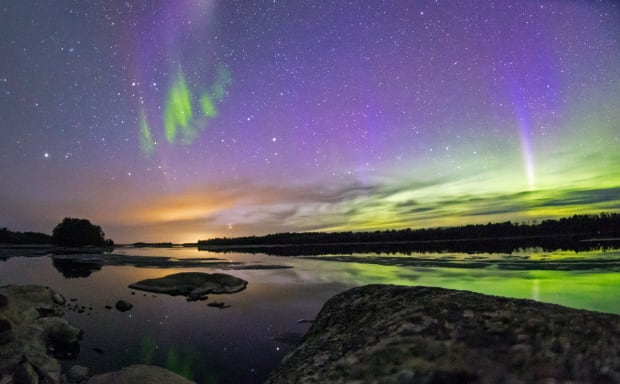
Voyageurs National Park, Minn.
Voyageurs National Park’s name commemorates the voyageurs--French-Canadian fur traders who were the first European settlers to frequently travel through the area. This image captures the Aurora Borealis from Voyaguers in 2018.
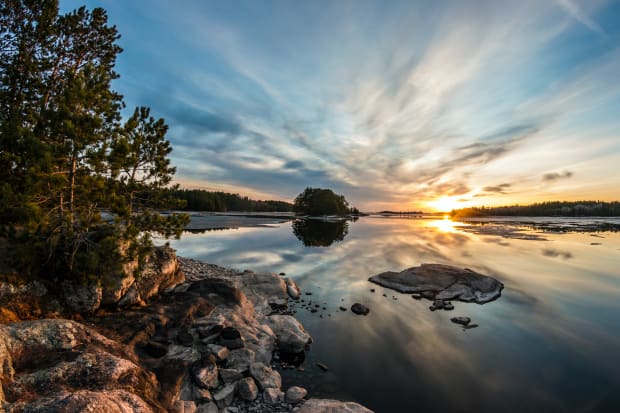
Voyageurs National Park
Located in northern Minnesota near the Canadian border, Voyageurs covers a vast area and is known for its forests, waterways and huge, island-dotted lakes. The park hosts multiple dark sky programs throughout the year when sky gazers can see the Aurora Borealis, meteor showers and other astral events, as well as learn techniques for stargazing.
If you want to help reduce light pollution, the IDA recommends:
- Only use outdoor lights when needed
- Only light the area that needs it
- Lights should be no brighter than necessary
- Eliminate upward-directed light
- Minimize blue light emissions-- use only warm light sources for outdoor lighting
Check out the International Dark-Sky Association's website for more information, and for some lists of dark sky parks, reserves, sanctuaries and communities around the world.







